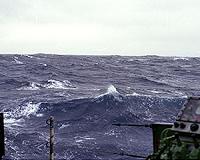| . |  |
. |
Denver CO (SPX) May 02, 2011 If a pregnant woman is exposed to bisphenol A (BPA), especially during the first trimester, her child may be at higher risk of wheezing early in life, according to a study to be presented Sunday, May 1, at the Pediatric Academic Societies (PAS) annual meeting in Denver. BPA is a chemical that has been used for more than 40 years in the manufacture of many hard plastic food containers and the lining of metal food and beverage cans. Trace amounts of BPA can be found in some foods packaged in these containers, and the chemical is detectable in over 90 percent of the U.S. population. The National Toxicology Program of the National Institutes of Health has some concern that exposure to BPA might affect the brain, behavior and prostate gland in fetuses, infants and children. In addition, exposure to BPA in the perinatal period has been associated with asthma in mice, but studies in humans are lacking. In this study of 367 pairs of mothers and infants, researchers examined the relationship between prenatal exposure to BPA and wheeze in childhood. BPA levels were measured in the urine of the pregnant women at 16 and 26 weeks' gestation as well as when they delivered their babies. In addition, every six months for three years, parents were asked whether their child wheezed. Results showed that 99 percent of children were born to mothers who had detectable BPA in their urine at some point during pregnancy. The amount of BPA detected in a mother's urine was related to wheeze only in the youngest group of children. At 6 months of age, infants whose mothers had high levels of BPA during pregnancy were twice as likely to wheeze as babies whose mothers had low levels of BPA. However, no differences in wheezing rates were found by 3 years of age. Researchers also found that high BPA levels detected in women at 16 weeks' gestation were associated with wheeze in their offspring, but high levels at 26 weeks' gestation and birth were not. "Consumers need more information about the chemicals in the products they purchase so they can make informed decisions," said Adam J. Spanier, MD, PhD, MPH, FAAP, lead author of the study and assistant professor of pediatrics and public health sciences at Penn State College of Medicine. "Additional research is needed in this area to determine if changes should be made in public policy to reduce exposure to this chemical." Until more information is available, Dr. Spanier concluded, women of child-bearing age should consider avoiding products made with BPA. To view the abstract.
Share This Article With Planet Earth
Related Links American Academy of Pediatrics Our Polluted World and Cleaning It Up
 Mercury converted to its most toxic form in ocean waters
Mercury converted to its most toxic form in ocean watersEdmonton, Canada (SPX) Apr 29, 2011 University of Alberta-led research has confirmed that a relatively harmless inorganic form of mercury found worldwide in ocean water is transformed into a potent neurotoxin in the seawater itself. After two years of testing water samples across the Arctic Ocean, the researchers found that relatively harmless inorganic mercury, released from human activities like industry and coal burning, ... read more |
|
| The content herein, unless otherwise known to be public domain, are Copyright 1995-2010 - SpaceDaily. AFP and UPI Wire Stories are copyright Agence France-Presse and United Press International. ESA Portal Reports are copyright European Space Agency. All NASA sourced material is public domain. Additional copyrights may apply in whole or part to other bona fide parties. Advertising does not imply endorsement,agreement or approval of any opinions, statements or information provided by SpaceDaily on any Web page published or hosted by SpaceDaily. Privacy Statement |